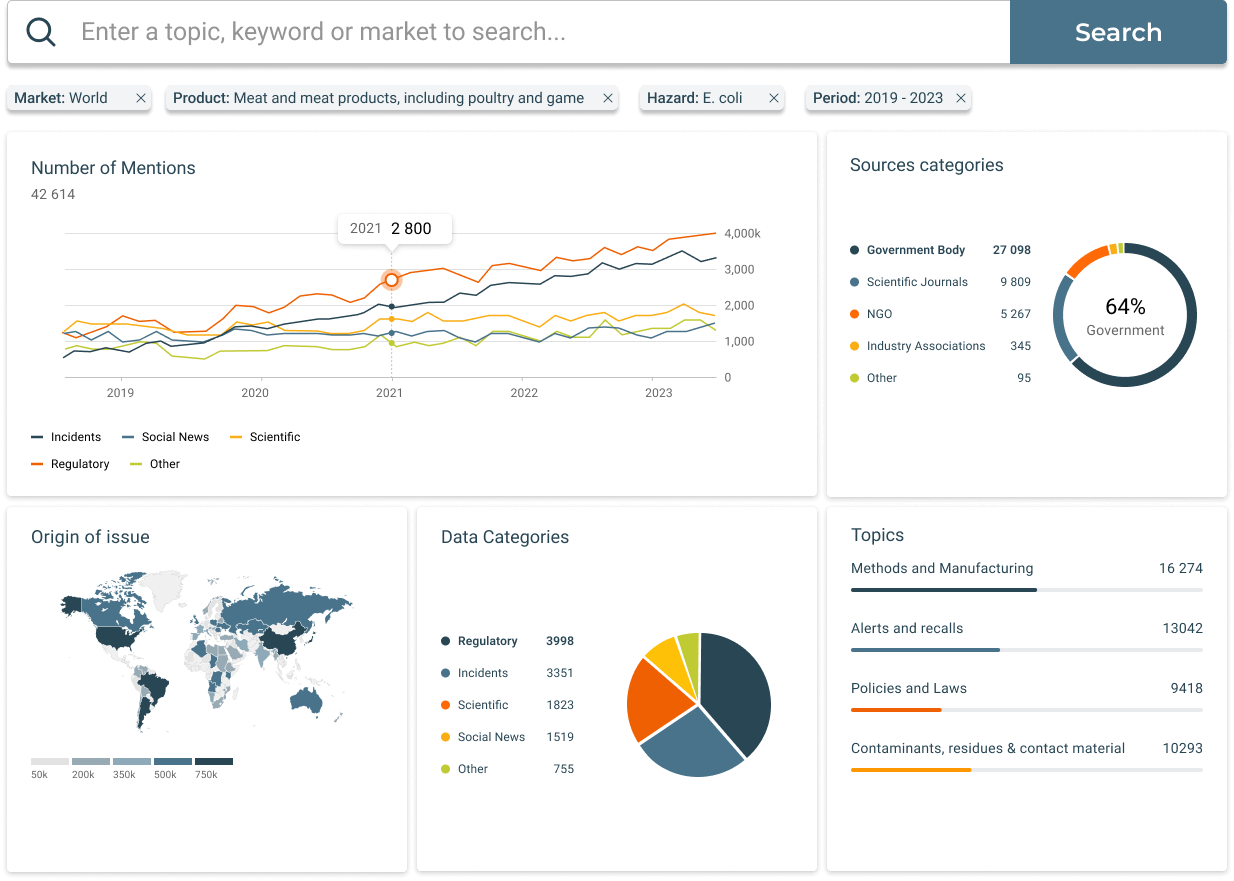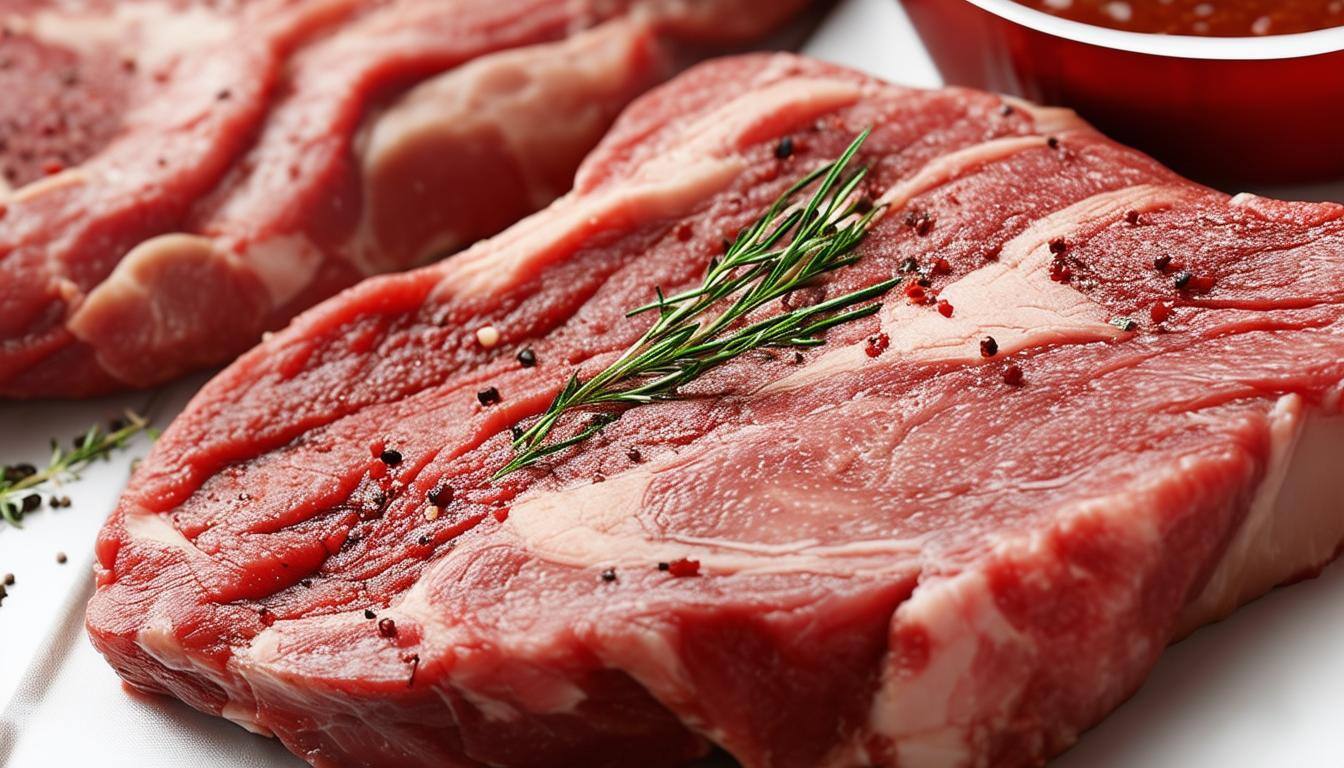Meat recalls are critical in protecting public health, as meat is particularly susceptible to contamination with pathogens that can cause serious foodborne illnesses. Recalls of meat products are often initiated in response to the detection of harmful bacteria, such as Salmonella, E. coli, and Listeria monocytogenes, as well as due to concerns like allergen mislabeling or foreign materials. This guide provides a detailed look into the causes of meat recalls, the regulatory framework that governs them, their impact on the meat industry, and essential preventive measures to ensure the safety of meat products from farm to table. Let's dive into this type of Food Recall.
What is a Meat Recall?
A meat recall is the process of removing potentially unsafe or contaminated meat products from distribution and sale. Recalls can be initiated voluntarily by meat processors or mandated by regulatory authorities such as the U.S. Department of Agriculture’s Food Safety and Inspection Service (USDA FSIS). The main goal of a meat recall is to protect consumers from health risks and prevent foodborne outbreaks caused by contaminated meat.
Meat recalls can involve a wide range of products, from raw cuts of beef, pork, and poultry to processed meats like sausages, deli meats, and ground beef. Given the potential severity of foodborne illnesses associated with contaminated meat, recalls are handled with urgency to minimize consumer exposure and prevent health risks.
Main Causes and Hazards of Meat Recalls
Meat recalls are usually triggered by one or more specific hazards, each of which presents significant risks to consumer health:
-
Bacterial Contamination (e.g., Salmonella, E. coli, Listeria): Contamination by pathogens is the leading cause of meat recalls. E. coli O157
, Salmonella, and Listeria monocytogenes can enter the meat supply chain through various stages, from slaughtering and processing to handling and packaging. These bacteria can cause severe gastrointestinal illnesses and, in extreme cases, can lead to life-threatening complications, particularly in vulnerable populations. -
Foreign Material Contamination: Occasionally, foreign materials such as plastic fragments, metal shards, or bone pieces can end up in meat products due to equipment malfunctions, processing errors, or packaging issues. These contaminants can cause choking, internal injuries, and other physical harm to consumers.
-
Allergen Mislabeling: Processed meat products sometimes contain allergens such as soy, dairy, or wheat. If these allergens are not properly declared on the label, it can result in severe allergic reactions for consumers. Recalls are often issued if cross-contamination with undeclared allergens occurs during production.
-
Quality Control and Improper Handling: Quality control issues, such as inadequate temperature management or improper handling practices, can contribute to contamination risks. These errors can lead to bacterial growth or spoilage, making the product unsafe for consumption.
These hazards underscore the need for strict hygiene, proper handling, and accurate labeling throughout the meat production process to prevent contamination and reduce the likelihood of recalls.
Regulatory Authorities' Role in Meat Recalls
In the United States, meat recalls are overseen by the USDA FSIS, while the CDC may assist in tracking and managing outbreaks linked to contaminated meat. Key responsibilities of regulatory authorities in meat recalls include:
-
Inspection and Monitoring: The FSIS regularly inspects meat processing facilities to ensure compliance with food safety standards. These inspections focus on hygiene, temperature control, and quality control protocols to prevent contamination and ensure product safety.
-
Recall Classification and Management: When a recall is necessary, FSIS classifies it based on the level of health risk:
- Class I Recall: High risk, involving products that could cause severe health issues or death. This is common for bacterial contamination recalls.
- Class II Recall: Moderate risk, where the product may cause temporary health issues but is unlikely to lead to severe illness.
- Class III Recall: Low risk, involving products that violate labeling or regulatory standards but do not pose an immediate health risk.
-
Testing and Surveillance: The FSIS and USDA conduct routine testing for pathogens in meat products to detect contamination before they reach consumers. This proactive approach helps identify issues early in the production process.
-
Public Communication and Alerts: When a recall occurs, FSIS issues public notices, detailing affected products, lot numbers, and guidance for consumers. Public communication is critical to ensuring that consumers know about potential risks and can avoid affected products.
-
Follow-Up and Corrective Actions: After a recall, FSIS may require companies to take corrective actions, such as improving sanitation protocols, upgrading equipment, or enhancing employee training. These measures help prevent future recalls and improve safety practices.
The involvement of regulatory authorities ensures that meat recalls are managed effectively and transparently, protecting public health and maintaining confidence in the food supply.
Impact of Meat Recalls on the Industry
Meat recalls can have significant consequences for producers, distributors, and retailers, affecting various aspects of business operations:
-
Financial Losses: Meat recalls lead to direct costs associated with product retrieval, testing, and implementing corrective actions. Additional financial impacts may come from lost sales, reduced consumer demand, and potential legal liabilities if consumers are harmed.
-
Reputation Damage: A meat recall, especially one linked to severe pathogens, can damage a brand's reputation and consumer trust. This negative publicity can affect long-term brand loyalty, leading companies to invest in public relations efforts to rebuild trust.
-
Increased Regulatory Scrutiny: Following a recall, companies often face heightened regulatory oversight, including more frequent inspections and additional compliance requirements. This increased scrutiny can strain resources and impact productivity.
-
Supply Chain Disruption: Meat recalls disrupt the entire supply chain, from slaughterhouses to retailers. Effective coordination with suppliers and distributors is essential to remove affected products, address contamination sources, and restore operations.
Understanding these impacts emphasizes the importance of preventive measures and rigorous quality control to protect both consumers and business operations.
Preventive Measures for Meat Recalls
Preventing meat recalls requires a proactive approach to food safety at every stage of production. Key preventive measures include:
-
Hazard Analysis and Critical Control Points (HACCP) Implementation: A robust HACCP plan identifies critical control points in meat processing, allowing for the implementation of safety measures to prevent contamination.
-
Sanitation and Hygiene Protocols: Strict sanitation practices in processing facilities are essential to prevent bacterial growth and cross-contamination. Regular cleaning of equipment, tools, and surfaces reduces the risk of contamination.
-
Temperature Control and Cold Chain Management: Maintaining appropriate temperatures during storage, processing, and transport helps inhibit bacterial growth. Cold chain management is critical for ensuring that meat products remain safe for consumption.
-
Supplier Verification and Raw Material Testing: Working with reliable suppliers and conducting regular testing of raw meat materials helps ensure quality and minimize contamination risks from the source.
-
Routine Microbial Testing: Conducting regular microbial tests on meat products throughout the production process enables early detection of contaminants. This testing, combined with thorough batch tracking, facilitates quick action in the event of contamination.
-
Employee Training on Food Safety: Properly trained employees who understand food safety protocols, including personal hygiene and safe handling practices, reduce contamination risks. Education is essential for maintaining consistent food safety standards.
-
Accurate Labeling and Allergen Management: Ensuring that labels accurately declare all ingredients and allergens is critical for protecting consumers with food allergies. Proper labeling and allergen control reduce the risk of mislabeling-related recalls.
By integrating these preventive practices, meat producers and processors can minimize recall risks, ensuring a safer product and greater consumer trust.
Conclusion
Meat recalls play an essential role in protecting public health, addressing risks associated with bacterial contamination, foreign materials, and mislabeling. Understanding the causes of meat recalls—from microbial hazards to quality control failures—enables industry professionals to take preventive measures and meet USDA FSIS standards for safety and quality.
For meat producers, proactive safety practices are essential. Implementing HACCP protocols, adhering to rigorous sanitation standards, and conducting regular microbial testing are all critical for minimizing recall risks. Transparent communication with regulatory authorities and the public further strengthens consumer confidence and supports a robust, reliable food supply.
Last Month's Food Recalls and Safety Incidents
Explore the latest food recalls, market withdrawals, and safety alerts in our free Food Safety Incidents Dashboard. Updated monthly and powered by SGS Digicomply, this dashboard provides a clear, filterable list of last month’s global food recalls and incidents, allowing you to stay informed on the products and hazards affecting the industry.

How manufacturers and companies can track and utilize global recall data:
SGS Digicomply continuously monitors and analyzes millions of data sources across over 160 jurisdictions. With easy-to-use filters for sources, locations, products, substances, hazards, and more, our platform allows manufacturers to track recall trends and gain actionable insights powered by AI-Copilot.
Explore our interactive demos to see these tools in action.

By combining diverse data sources, SGS Digicomply offers the most comprehensive and targeted screening of food safety data, contextualized with real-time lab data to identify emerging risks.





.webp?width=1644&height=1254&name=Food%20Safety%20Dashboard%201%20(1).webp)
